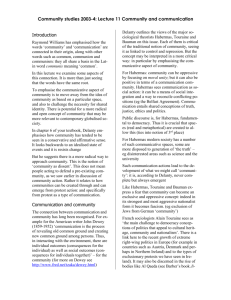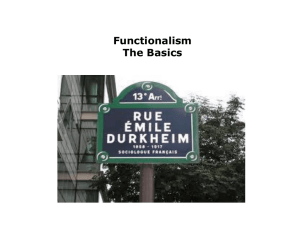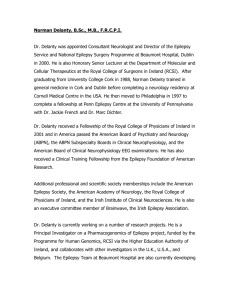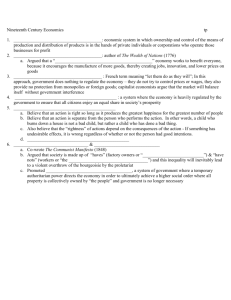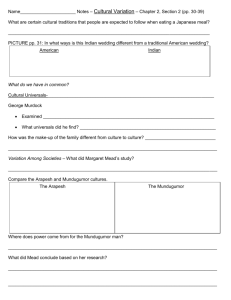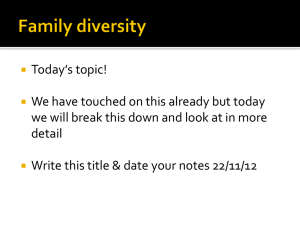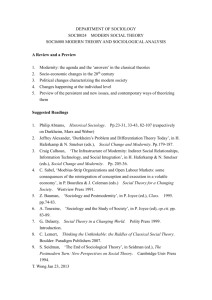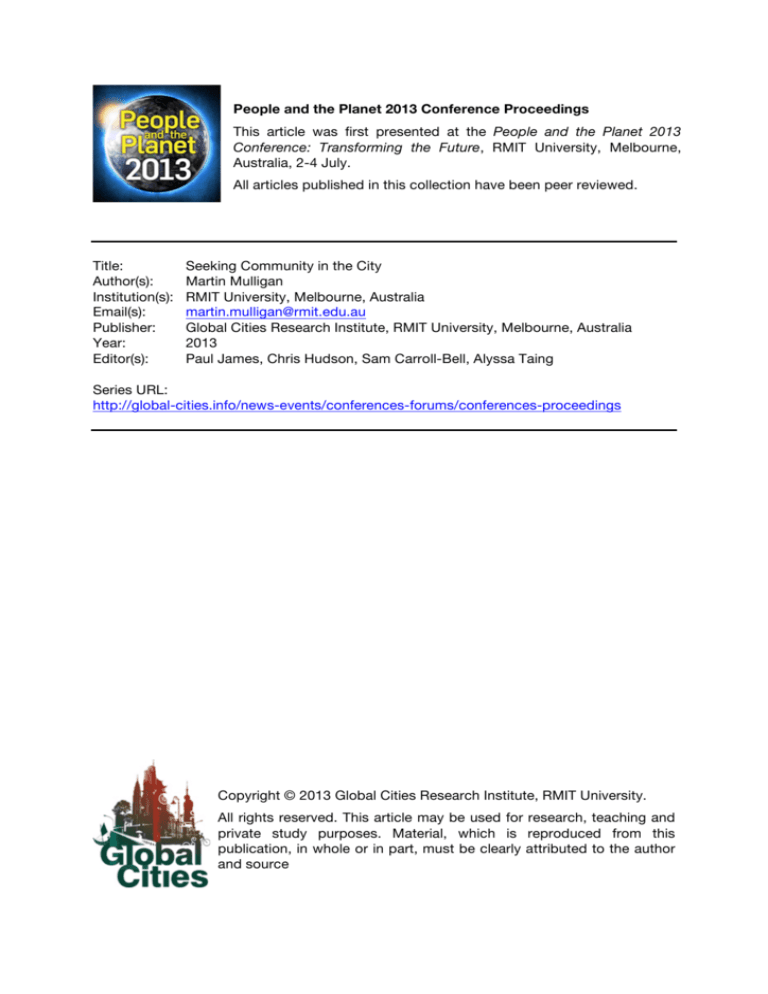
People and the Planet 2013 Conference Proceedings
This article was first presented at the People and the Planet 2013
Conference: Transforming the Future, RMIT University, Melbourne,
Australia, 2-4 July.
All articles published in this collection have been peer reviewed.
Title:
Author(s):
Institution(s):
Email(s):
Publisher:
Year:
Editor(s):
Seeking Community in the City
Martin Mulligan
RMIT University, Melbourne, Australia
martin.mulligan@rmit.edu.au
Global Cities Research Institute, RMIT University, Melbourne, Australia
2013
Paul James, Chris Hudson, Sam Carroll-Bell, Alyssa Taing
Series URL:
http://global-cities.info/news-events/conferences-forums/conferences-proceedings
Copyright © 2013 Global Cities Research Institute, RMIT University.
All rights reserved. This article may be used for research, teaching and
private study purposes. Material, which is reproduced from this
publication, in whole or in part, must be clearly attributed to the author
and source
Seeking Community in the City
MARTIN MULLIGAN
Abstract: For more than a century, western sociologists have expressed deep
ambivalence toward the word ‘community’. Responding to an influential book by
Ferdinand Tonnies, Durkheim first took issue with the topic by suggesting that
urbanization would make the very idea of community anachronistic (Aldous et al.
1972). He also argued that city-dwellers would develop new forms of association
and solidarity and preferred using terms—like ‘civil society’—which did not carry
the same kind of past associations or emotional baggage as ‘community’. The
trouble with this—as both Delanty (2003) and Esposito (2010) have since
explained—is that ‘community’ has ancient roots in a number of European
languages and touches on a perennial and ageless human desire to feel a sense of
belonging within the much more diffuse notion of ‘society’. Moreover, this
ageless human search to belong suggests we would struggle to avoid ‘community’
even if we wanted to, and that it has a broad and enduring appeal. As Anthony
Cohen (1985) has suggested, the idea of community has enormous symbolic
importance—even if it means different things to different people.
Keywords: Ambiguity, community, diversity, division, globalization, insiders,
outsiders, urbanization.
‘Engaging with community is a practice full of ambivalence, but always one full of hope.’
(Brent 2009, p. 261)
1.
Ambivalence about community
For more than a century, western sociologists have expressed deep ambivalence toward the
word ‘community’. Responding to an influential book by Ferdinand Tonnies, Emile
Durkheim first took issue with the topic by suggesting that urbanization would make the very
idea of community anachronistic (Aldous et al. 1972). He also argued that city-dwellers
would develop new forms of association and solidarity and preferred using terms—like ‘civil
society’—which did not carry the same kind of past associations or emotional baggage as
‘community’. The trouble with this—as both Delanty (2003) and Esposito (2010) have since
explained—is that ‘community’ has ancient roots in a number of European languages and
touches on a perennial and ageless human desire to feel a sense of belonging within the much
more diffuse notion of ‘society’.
In the decades since Durkheim, many sociologists have complained that the word
‘community’ has many—sometimes contradictory—meanings. Cultural studies pioneer
M. Mulligan
Raymond Williams famously quipped (1983, p. 76) that the word ‘never seems to be used
unfavourably [because it can be either] the warmly persuasive word to describe an existing
set of relationships or the warmly persuasive word used to describe an alternate set of
relationships’. While Williams was rather bemused by the slippery nature of the word,
feminist sociologist Iris Marion Young (1990) was savage when suggesting that it can be
used as a mask for racism, in that, it can be used to create a sense of authenticity for some at
the expense of others. In other words, it can be used to create categories insiders and
outsiders. Closer to the sentiment of Williams was that of Australian sociologists Lois
Bryson and Martin Mowbray (1981) who noted that talk of community tends to be used by
politicians and policy-makers as a kind of ‘spray-on solution’ for societies with unresolved
tensions and divisions. Yet, as Delanty (2003) and Esposito (2010) both argued, the fact that
community represents an ageless human search for a sense of belonging means that we
cannot avoid it even if we wanted to. It has broad and enduring appeal. It is not really
surprising—yet worth noting—that it was an anthropologist in Anthony Cohen (1985) who
helped to remind sociologists that the idea of community has enormous symbolic
importance—even if it means different things to different people.
2.
Impact of globalization
If the post-industrialization migration of people from the countryside to the city made old
ideas about community anachronistic—as Durkheim argued—then the even bigger flows of
people, goods, money, ideas and information—made possible by greatly enhanced transport
and communication technologies—would surely represent an even bigger threat. Indeed some
leading sociologists, such as Saskia Sassen (2006) and John Urry (2000 and 2003), have
argued that local communities have become largely irrelevant. Indeed, both Sassen and Urry
prefer the notion of the ‘network society’ as articulated by Manual Castells (1996). Once
again the suggestion emerged that the word ‘community’ had probably reached its use-by
date and that other language may be needed to describe other forms of association.
Against this, Nikolas Rose (1996) has argued that uncertainties and unpredictabilities
associated with globalization have actually increased the desire for community, partly
because the more diffuse notion of society has not been able to deliver a sense of security.
Having been a fierce critic of communitarianism, Zygmunt Bauman (2001) reached a similar
conclusion, while Gerard Delanty (2003) went even further, to suggest that there are more
opportunities than ever before to participate in community in the world of advanced
communication technologies.
All the sociologists who have written on this topic seem to agree, that stable communities,
which change little from one generation to another, no longer exist in a world of increased
global flows. The existence of community at any level of society cannot be taken for granted
and, indeed, a sense of community has to be consciously constructed. Gerard Delanty (2003)
made an important argument, in saying that there is no need to counterpose local and nonlocal communities because a community—as distinct from something like a
neighbourhood—exists only to the extent that it is talked about internally, and projected
externally. We all know that there are many neighbourhoods—especially in cities—where
there is little or no sense of community. Moreover, Delanty emphasizes communication in his
discussion of the communicative construction of community. The implication is that, most
people now have the opportunity to participate in the communicative construction of many
communities: both ‘real’ (or embodied) and ‘virtual’. The danger here is that we may try to
2
Seeking Community in the City
spread ourselves too thinly and Delanty noted that many virtual communities are ephemeral
and rather ‘thin’ in their significance for those involved.
An emphasis on the communicative construction of community in a world of global flows
also makes distinctions between city and country irrelevant in regard to the presence or
absence of community. There may be fewer and less overlapping communities in smaller and
more dispersed human settlements compared to big cities, and it may be easier to delineate
one community from another. But the need to have a sense of belonging to community is no
less for people living in the city and the distinction between community and society, as
expressed by Nikolas Rose (1996), may be even more sharply positioned for people living in
cities. The creation of community may take more work within the flux and flow of urban life
but the reward for effort, may indeed be greater.
3.
Divisions and diversity
Delanty’s (2003) emphasis on the communicative construction of community helps us
understand how certain projections of community identity can exacerbate potential divisions
by enabling some people to feel they belong, while also disenabling this sense for others.
Narrowly defined conceptions of community identity create categories of insiders and
outsiders. This may not be a problem when it comes to the creation of virtual communities to
which people can choose to belong or even special interest communities within broader local
communities. However, it does become a problem when some people feel that they are being
excluded from the communities they would like to belong to: especially if such people are
left feeling that they are excluded or marginalized by all forms of community that should be
available to them. There is plenty of room for the coexistence of many forms of community,
some defined narrowly and specifically, while others are defined more broadly. However, the
mix needs to cater for all and problems can erupt when there is no overarching sense of local
community for people who live in close proximity to each other. Problems can also erupt
when there is a contested sense of belonging based on religious or ethnic identities, even if
they are not place-based.
The coexistence of diverse communities can make life more interesting for people living in
tolerant societies and it is the existence of diversity which, in turn, can make societies more
tolerant. However, intra-communal and intercommunal tensions can result in simmering
resentments or overt violence as seen in places ranging from Bosnia and Sri Lanka to the
streets of major cities in England and France. As Esposito (2010) explained, there is a rather
desperate and sinister side to the desire for community and divisive conceptions of
community need to be contested by those who value tolerance and peaceful coexistence. As
well as being ‘warm and persuasive’, to quote Williams (1983), community can be dark and
troublesome and it is in everyone’s interest to ensure that there is a place for all in the
projection of coexisting communities. This can give more meaning to the rather bland policy
notion of social inclusion.
4.
Engaging with ambiguity
Ambivalence about ambiguities within, and abuse of, the word community has led many to
suggest alternative language. Durkheim preferred to talk of the emergence of ‘civil society’
while there has been growing interest in the concept of ‘social capital’, which appears to have
3
M. Mulligan
been mooted as long ago as 1916 (Putnam 2000, p. 19). For sociologists, the most influential
rendition of the concept of ‘social capital’ came from Pierre Bourdieu in 1986. However,
Bourdieu later made it clear that he promoted the term because he wanted to contest narrow
‘economism’ in the literature on social wellbeing. He expressed misgivings about
instrumental use of the notion of social capital in an interview published in 1993 (p. 33) in
which he said that ‘if there is one person for whom it’s a problem, it’s myself’. He went on to
say that the term has rhetorical value in that it poses ‘fertile questions’ to those who think that
social wellbeing can be reduced to economic opportunity but he made it clear that the term
cannot be taken as a replacement for ‘sociability’ (ibid, p. 34). A number of scholars have
argued that very little has come of the focus on ‘social capital’ (eg. Fine 2001, Smith and
Kulynych 2002).
The books by Gerard Delanty (2003) and Roberto Esposito (2010) remind us that the search
for a sense of belonging to community is a perennial part of what is sometimes rather
quaintly called ‘the human condition’. Indeed, Esposito argued that there are gloomy aspects
to this search, as the failure to find community, can be thought of as a ‘hole’ into which we
‘continually risk falling’ (2010, p. 8). This helps explain why there can be a desperate edge to
the search for community; why it is often hotly contested; and why politicians and others
want to be associated with any success in finding a sense of community, no matter how
fleeting or ephemeral. Esposito (2010) and Delanty (2003) join with Jean-Luc Nancy (1991)
in saying that the experience of community can never be fully achieved or completed.
Delanty put this a little more positively than Nancy but they agree that community is best
seen as a perennial aspiration, with ephemeral or partial experiences of the power of
community being enough to keep the aspiration alive and burning. Nevertheless, Esposito
argued that the search for community is the ‘sole dimension’ of what it means to be human
because it is ‘constitutive of [our] co-living’ (2010, p. 8).
Words like ‘community’ can be frustrating because they are hard to define with any precision
and can mean different things to different people. However, such words often tap into depths
of human experience that are difficult to put into words. Community carries more layers of
meaning and an emotional power that is missing from alternative terms such as ‘civil society’
or ‘social capital’ and we need to engage with the perennial desire for community—
especially in a world of global flows—rather than turn to ‘safer’ but less evocative language.
5.
Learning from practice
Those who feel inclined to steer clear of the word community should also acknowledge that
community development has been a vibrant field of practice in countries such as United
Kingdom, United States and Australia since the late 1960s. An international Community
Development Journal was launched in the United Kingdom in 1968 and has reported on a
wealth of experience and research ever since. Some of the founders of the journal marked the
40th anniversary of its foundation by pulling together a selection of the most influential
writing in order to show the field of practice has more relevance than ever (Craig et al. 2008).
Many local government authorities and a host of community-based organizations in Australia
employ people to work explicitly in community development and many have now acquired
several decades of experience working in this field. Community development seemed a novel
concept when the author of this paper served on the Board of Management of an organization
called South Sydney Community Aid in 1973. At that time community art was also a
4
Seeking Community in the City
fledgling field of practice in Australia and it seemed to have little to do with community
development. The author was surprised to find a significant overlap between community
development and community art, when he was the lead researcher on a research project for
VicHealth between 2004 and 2006 (see Mulligan et al. 2006). That report showed that
community development practice had come a long way since the early 1970s and yet many of
the sociologists who write about community seem to be unaware of this.
The book by Jeremy Brent (2009) is an important one in the author’s opinion because he
spent 25 years as a community development worker in a public housing estate in Bristol
before returning to university undertake postgraduate study at the University of Birmingham,
where he eventually managed to complete his PhD. Brent’s PhD was published,
posthumously, as a book by some of his friends and associates. The book includes an
impressive survey of the literature on community in a globalizing world, and while Brent
acknowledges the many difficulties involved in trying to give the search for community real
meaning, he ended his exploration with the statement used at the beginning of this paper:
‘Engaging with community is a practice full of ambivalence, but also one full of
hope’ (Brent 2009, p. 261).
We cannot afford to leave community to those who might fill it with shallow or divisive
meanings. It is something worth fighting for.
References
Aldous, J., Durkeim, E. and Tonnies, F. (1972), ‘An Exchange Between Durkheim and
Tonnies on the Nature of Social Relations with an Introduction by Joan Aldous’, American
Journal of Sociology, vol. 77, no. 6, pp. 1191–200.
Bauman, Z. (2001), Community: Seeking Safety in an Insecure World, Polity Press,
Cambridge (UK).
Bourdieu, P. (1986), ‘The Forms of Capital’ in J. G. Richardson, ed., Handbook of Theory
and Research for the Sociology of Education, pp. 241–58, Greenwood, New York.
Bourdieu, P. (1993), The Field of Cultural Products, Columbia University Press, New York.
Brent, J. (2009), Searching for Community: Representation, Power and Action on an Urban
Housing Estate, Polity Press, Bristol.
Bryson, L. and Mowbray, M. (1981), ‘Community: The Spray-On Solution’, Australian
Journal of Social Issues, vol. 16, no. 4, pp. 255–67.
Castells, M. (1996), The Rise of the Network State, Vol 1: The Information Age, Blackwell,
Oxford.
Cohen, A. (1985), The Symbolic Construction of Community, Tavistock, London.
Craig, G. (2008) [1989], ‘Community Work and the State’ in G. Craig, K. Popple and M.
Shaw, eds, Community Development in Theory and Practice: An International Reader, pp.
176–94, Spokesman Books, Nottingham.
Delanty, G. (2003), Community, Routledge, London.
5
M. Mulligan
Esposito, R. (2010), Communitas: The Origin and Destiny of Community, Stanford
University Press, Stanford.
Fine, B. (2001), Social Capital Versus Social Theory: Political Eeconomy and Social Science
at the Turn of the Millennium, Routledge, London.
Mulligan, M., Humphery, K., James, P., Scanlon, C., Smith, P. and Welch, N. (2006),
Creating Community: Celebrations, Arts and Wellbeing Within and Across Local
Communities, Globalism Research Centre, RMIT University, Melbourne (AUS).
Nancy, J. L. (1991), The Inoperative Community, University of Minnesota Press,
Minneapolis.
Putnam, R. (2000), Bowling Alone: The Collapse and Revival of American Community,
Simon and Schuster, New York.
Rose, N. (1996), ‘The Death of the Social? Refiguring the Territory of Government’,
Economy and Society, vol. 25, no. 3, pp. 327–56.
Sassen, S. (2006), A Sociology of Globalization, W. W. Norton, New York.
Smith, S. and Jessica, K. (2002), ‘It may be Social, but why is it Capital? The Social
Construction of Social Capital and the Politics of Language’, Politics and Society, vol. 30,
no. 1, pp. 149–86.
Urry, J. (2000), Sociology Beyond Societies: Mobilities for the Twenty-First Century,
Routledge, London.
Urry, J. (2003), Global Complexity, Polity, Cambridge (UK).
Williams, R. (1983), Keywords: A Vocabulary of Culture and Society, Flamingo, London.
Young, I. M. (1990), ‘The Ideal of Community and the Politics of Difference’ in L. J.
Nicholson, ed., Feminism/Postmodernism, Routledge, New York.
6

